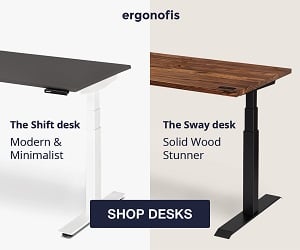Part 2 of 2
Meeting rooms are the most profitable asset of a flexible office. Coworking operators are particularly well-poised to offer a more focused and economical alternative to hotel event spaces for small and large group trainings.
In addition to training sessions for medium-sized groups taking place offsite, small-group meetings are on the rise, creating additional opportunities for operators to optimize their existing meeting spaces.
Why?
High levels of innovation and collaboration have become key drivers of success in business today, according to Chris Kelly, president and cofounder and of Convene. Business centers that provide high quality meeting space and service are well-positioned to capture a growing market.
We asked our experts what makes a meeting space successful and what companies look for in a venue for meetings of four to 20 guests.
Here’s what they said.
1. Infrastructure And Amenities Based On Meeting Type
Most meetings can be categorized into one of three types, depending on size, needs and amenities offered, according to Kelly. Meetings usually fall under the following categories: informative, generative, and evaluative.
“Once you understand those three different use types, you anticipate 95% of the client’s needs.”
When equipping the room, consider the type of technology and infrastructure the clients might need. This includes projectors, screens, audio visuals, and different types of seating arrangements.
2. Furniture Designed For Flexibility
“Don’t put any type of fixed furniture in the room that can’t be moved,” warns Kelly. “If you can, eliminate large boardroom-style tables, so you can optimize the number and types of meetings you’re able to host. If you commit to a board room table inside a meeting room, brainstorming is less likely to happen,” said Kelly, resulting in missed opportunities.
Likewise, for larger training rooms.
“If you have fixed seating in a tiered classroom style, there’s not much you can do with that layout,” added Marissa Yu, principal, Page Architecture/Engineering and director of interiors practice in Houston. “You never know how people are going to want to use the room, so it helps to have the ability to reconfigure.”
Instead, Kelly recommends training-style tables that can be ganged together for a boardroom configuration, but also work individually to support multiple meeting types.
3. Focused Service + Supplies
While design is important, another component of successful meetings is service. Make office supplies available and visible so they’re intuitive and available to people as needed, rather than someone having to request them, suggests Kelly.
4. Seamless Technology Experience
Meetings can be stressful enough. A service-oriented host will assure technology issues don’t add to the anxiety. To meet expectations, technology in your space should be:
- Available. This means ubiquitous Wi-Fi, easy plug ins and working equipment in place.
- Accessible. Data ports, power sources and charging stations that are conveniently located and within easy reach of users.
- Reliable. Meeting venues should provide enough broadband to serve the population.
Tech service must be on point. “If something related to IT doesn’t work, the user has got to be able to fix it, otherwise it’s going to be a waste of time,” Yu emphasized. “If something goes down, they need to be able to call someone immediately.”
- Effortless. Setup and use should be simple and intuitive. For more complex setups, onsite support should be available.
- Current. Equipment and connections should be up to date.
Flat screens are becoming the norm, according to Yu. “You can often can get good resolution and large-enough sized screens to avoid dealing with projectors.”
Wireless presentation systems such as ClickShare allow laptop content to be displayed through the TV for all users to view without cables.
5. High Quality, Multi-use Presentation Tools
Considering investing in built-in presentation tools that work as a design element.
While numerous styles of fixed and mobile whiteboards are available, Convene’s Kelly likes walls of back-painted glass with magnetic finish that work as white board, flip chart and pin board.
“You’re going to spend more up front on your finishes but then you never have to worry about replenishing those things, moving them, storing them, fixing them when they break because they get moved around too often,” says Kelly.
6. Adjacent Gathering Areas
Providing designated space adjacent to the conference room to receive people and where people can move around is an important planning element, noted designer Yu.
Convene’s Kelly deems the important time and space before, between and after the conference the fourth meeting type. “A lot of the synthesis, relationship building, ideation happens in that time,” he notes.
“Understanding the relationship between the design of your spaces and the use of that time is really important,” Kelly emphasized.
Common areas situated adjacent to the meeting room allow guest to mingle and network over coffee or cocktails. If the space is large enough, it can do dual duty as an event space in the evening.
7. Natural Light
Whenever possible, design should take advantage of natural light, whether that means situating meeting rooms along a window wall, or incorporating glass walls and/or skylights to bring light in throughout the facility. Not only does it provide a distinct advantage over dark, basement-level hotel rooms, daylight is an important contributor to workplace wellness and productivity.
8. Acoustics
Noise mitigation is particularly important in rooms where presentations take place. Within the room, make sure all surfaces – walls, ceilings and floors – have enough sound-absorbent materials to provide ideal acoustics, without a lot of echo and reverberations, said Yu.
9. Privacy
Companies often prefer going to an offsite meeting space because the meeting content is confidential or they don’t want employees to know about the gathering. They may appreciate opportunities for visual as well as auditory privacy even while in a setting where they would not be recognized.
10. Image & Aesthetics
Some environments are better suited for certain types of meetings. Many firms looking for a room for brainstorming would welcome a casual office with startup-style décor, vibe and energy. On the other hand, a senior-level team from a buttoned-up corporate firm may prefer a more traditional setting. Operators should recognize where their space fits in and market accordingly.
11. Accessibility
Locations should be convenient and easy for members to get to, even if they’re not familiar with the area. Urban settings should provide easy access to mass transit. Suburban locations should have ample parking and good signage so meetings begin with a positive first impression.
12. Branding
Outsourcing meetings is an excellent opportunity to introduce your space to a new audience. Assuming it’s not a confidential meeting, why not have your attendees help spread the word? Do you have a unique, easily identifiable element? Signature mascot? Unique piece of art? Fab roof deck? Make it insta-worthy. Post a sign with the name of your space and hashtag and let social media do the heavy lifting.
One last tip:
Most Popular Additions to Meeting Facilities
The most mentioned furniture and equipment venue operators reported incorporating into their facilities.
| Furniture | Equipment |
| “Fireside chat” seating
Bean bag chairs Chalk paint walls Communal tables Creative partitions Ergonomic or eco-friendly furniture High top tables Kitchen- and dining-style furniture Lounge areas and seating On-site recreational facilities |
Moveable/portable tech
Charging stations Digi tables Gaming equipment Holography display Interactive white boards Mobile AV equipment Presentation technology Small theater Videoconferencing equipment |
| Source: IACC Meeting Room of The Future June 2017 Report | |


 Dr. Gleb Tsipursky – The Office Whisperer
Dr. Gleb Tsipursky – The Office Whisperer Nirit Cohen – WorkFutures
Nirit Cohen – WorkFutures Angela Howard – Culture Expert
Angela Howard – Culture Expert Drew Jones – Design & Innovation
Drew Jones – Design & Innovation Jonathan Price – CRE & Flex Expert
Jonathan Price – CRE & Flex Expert













